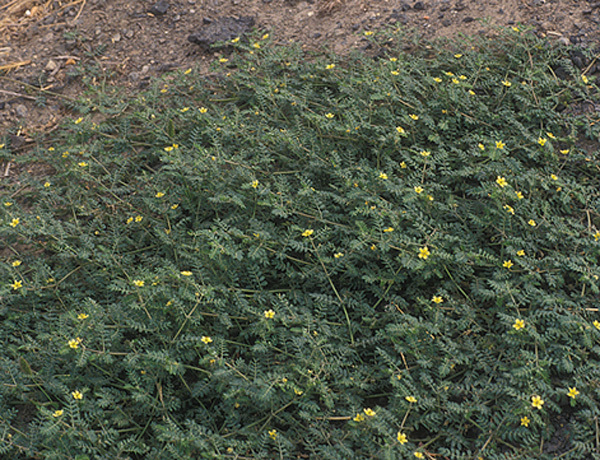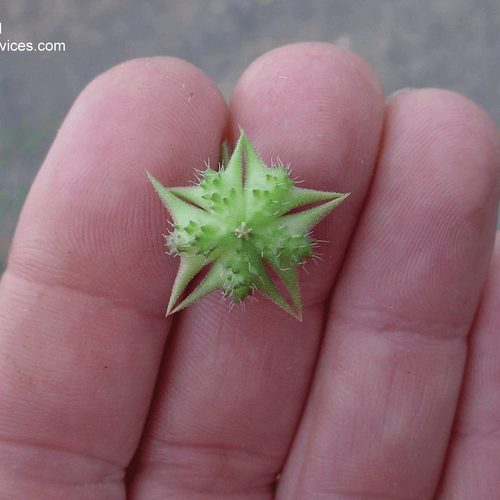- Joined
- Mar 26, 2018
- Messages
- 1,714
- Reputation
- 0
- Reaction score
- 5,708
- Points
- 0
- Currently Smoking
- Haze
You're right.
What I said was out of line. I hope you can accept my apology.
No No it’s fine apology accepted, thank ypu and I’m sorry aswell,
You're right.
What I said was out of line. I hope you can accept my apology.
9 PM for UK Members https://www.worldtimebuddy.com/bst-to-mdt-converterIs curing your bud a challenge? Come join us at 2 pm MDT (Mountain Time) as we talk to the owners of Boveda, the makers of a desiccant pack that helps control moisture and humidity in your curing buds!
Click here to listen when we go live at 2 pm MDT!
Can't make it? The reel will be available shortly after it goes live for playback! See you there!
Nice setup! Loving the lights.Good eveningIt has been a busy week and a very hot one too!
Must be almost a week since I last had the chance to drop by but these days, I like to get life/work tasks done before I post in the forums.
Yeah still no journal , well if it happens it happens and if it don't... well that's how the cookie crumbles, there will be plenty more times to post a journal.
I have been taking pics through out, so I can post it as a journal, as when I get the chance.
I have however for those interested some pics taken today.
4 x Trippy Gorilla Auto from Bighead seeds
3 x SANlight S4W's ( mainly 2 bars are used and the 3rd bar goes on when the temps is cool enough)
View attachment 939013 View attachment 939014 View attachment 939015 View attachment 939016 View attachment 939017 View attachment 939019
View attachment 939024
SANlight S4W's
View attachment 939022 View attachment 939023
@MossyThanks for the rep!

Peace and love returns to my tranquil AFN world.No No it’s fine apology accepted, thank ypu and I’m sorry aswell,
About 10 years ago one of my co-workers was installing some imaging equipment at a veterinarian's office. They wanted one of the components tucked out of the way next to the kennel cages.Peace and love returns to my tranquil AFN world.
Except the recent heat wave that helped burn the top of one of my plants, now that pissed me off. But as my grandmother always said "it's better to be pissed off than pissed on"!
Sent from my comfy chair.
[emoji16][emoji41] [emoji43][emoji848]
Good eveningIt has been a busy week and a very hot one too!
Must be almost a week since I last had the chance to drop by but these days, I like to get life/work tasks done before I post in the forums.
Yeah still no journal , well if it happens it happens and if it don't... well that's how the cookie crumbles, there will be plenty more times to post a journal.
I have been taking pics through out, so I can post it as a journal, as when I get the chance.
I have however for those interested some pics taken today.
4 x Trippy Gorilla Auto from Bighead seeds
3 x SANlight S4W's ( mainly 2 bars are used and the 3rd bar goes on when the temps is cool enough)
View attachment 939013 View attachment 939014 View attachment 939015 View attachment 939016 View attachment 939017 View attachment 939019
View attachment 939024
SANlight S4W's
View attachment 939022 View attachment 939023
@MossyThanks for the rep!

At the time, the bugs crawling on Steve Bailey’s new cannabis plants didn’t seem particularly special. They weren’t even all that annoying.
The Curious Case of the Cannabis Aphid


It was early 2016, during the first few months of Oregon’s legal recreational marijuana market, and a Portland company was running a “grow the best clone” contest. Entrants each received cuttings of the same strain from the same source to see who could grow it best.
“Within a matter of months, you saw everybody having it.”
Steve Bailey, Bull Run Craft Cannabis
And the clones received by Bailey and his partners at Bull Run, a craft “farm-to-jar” cannabis brand with cultivation operations in Boring, Oregon, had bugs.
“We threw them out and that was that,” Bailey recalled. Or it was, for a while. Before long, friends and colleagues—many of whom had participated in the same clone contest—noticed similar bugs crawling on some of their crops. “Literally, within a matter of months, you saw everybody having it,” he said.
Like that, Oregon’s cannabis aphid outbreak had begun.
A Bug’s Life
As anyone who grows marijuana (or has tried) knows, unwelcome visits from insects are an occupational hazard. Bailey, who grew up on a traditional farm in the Willamette Valley, identified them as a “normal lettuce aphid,” he said.
He wasn’t alone. Other cannabis farmers in the area initially mistook the unidentified bug as a green peach aphid, hop aphid, or other common pest, said Joshua Vlach, an entyomologist at the Oregon Department of Agriculture.
The real culprit, it turns out, was Phorodon cannabis—literally the “cannabis aphid”—a pale yellow creature first identified and catalogued by an Italian researcher in the 1860s. For whatever biological reason, the bug evolved to feed on only plants of the genus Cannabis sativa.

Bailey believes the clone contest helped the bugs proliferate through Oregon. As for how the insect made it to the clone contest, somebody—nobody knows who—probably did what they weren’t supposed to and brought clones or cuttings across state lines.
“Colorado saw it before we did, so I would say that I suspect it came from clones from another region,” Vlach said via email. “Having said that, it is possible it was here in low levels or misidentified from the start.”
Even after they were identified, the aphids continued to spread across the state. By the end of 2017, they’d become so pervasive that the Oregon Department of Agriculture issued a statewide pest warning advisory. Copied and pasted from https://www.leafly.com/news/science-tech/the-curious-case-of-the-cannabis-aphid
Pest Management of Hemp in Enclosed Production Cannabis Aphid (Phorodon cannabis) Damage and Diagnosis.
Cannabis aphid is is a pale-colored insect that occurs on leaves and stems. Indoors, they are often pale yellow, but they range from light green, to pale pink, to light brown.

Both wingless and winged forms occur. Some dark spotting occurs on winged forms. Wingless forms lack this patterning but may have pale striping running along the top of the body.
Cannabis aphid feeds on fluids of the plant phloem, which it extracts through its "piercingsucking" mouthparts. Very little, if any, injury occurs to cells from this feeding, so there are no symptoms on leaves of white flecking or surface scarring such as is produced by spider mites or thrips. Damage is caused by the loss of plant fluids. When high numbers of aphids are present and sustained this can cause reductions in plant vigor that can result in slowed growth, wilting, and leaf yellowing. As cannabis aphids feed, they also continuously excrete a sticky fluid, known as honeydew. This is produced in the form of tiny droplets which drop onto leaf surfaces below where it can be noticed as small shiny spots. This excreted honeydew can be an excellent diagnostic sign for detecting cannabis aphid infestations.
As cannabis aphids grow they must periodically shed their external "skin" (exoskeleton) and as they produce a new and larger exoskeleton for the next, larger life stage. These "cast skins" will collect around colonies of aphids and often drop onto leaves below an aphid colony. Along with honeydew, the cast skins can be an excellent diagnostic sign for detecting cannabis aphid infestations.
Note on virus transmission: Some specific kinds of aphids can transmit some specific viruses to some specific plants. None of the viruses known to infect cannabis are known to be transmitted by any aphids and cannabis aphid is not known to transmit any viruses. The primary viruses that are transmitted to cannabis are "mechanically transmitted". These viruses are spread through wounds, such as are produced when plants are cut or by roughly handled.
Biology Notes. Cannabis aphid is only reported to develop on cannabis. Therefore, where cold winters prevent survival of live cannabis plants this insect will also not survive outdoors between growing seasons. It will be sustained only on plants where there is year round production on protected indoor-grown plants. Indoor facilities may potentially be infested in late summer from winged aphids originating from outdoor-grown crops of cannabis. However, the most likely route of infestation is through the introduction of infested plants or cuttings. Cannabis aphid reproduces asexually - only females are present and they hatch their eggs internally giving live birth to genetically identical daughter aphids. As aphids feed and develop, they will periodically molt, discarding their old exoskeleton (cast skin) while growing into a new, larger one. Two forms of this aphid may be produced, wingless or winged. Normally wingless forms are produced, particularly if the host plants are in good condition and the aphids are not overcrowded. However, some percentage of the population instead produces wings, and these are the forms that can disperse over long distances and will most readily colonize new plants. Large numbers of winged cannabis aphids have been observed on outdoor grown hemp crops in midSeptember and it is possible that shortening day lengths are a trigger to produce a shift to increased percentage of winged forms. Winged stages of aphids are relatively weak fliers and will largely be carried by wind speeds more than about 3 mph. By controlling air flows aphids aphid movement in a greenhouse can largely be controlled - with aphids collecting in areas when winds flow and aphids being prevented from areas where headwinds are too strong.
Biology of cannabis aphid is very little studied. Presumably it is fairly typical of most other aphids, which can become mature adults within a couple of weeks or so after birth. (Development is always strongly related to temperature.) Adult females may give birth to perhaps 1-5 young per day for their remaining life, which likely will normally be short, perhaps a 3-4 week maximum. Where natural enemies are present, aphid survival will average a much shorter period.
Management of Cannabis Aphid Monitoring. Careful plant inspections can be very useful in detection of cannabis aphid. The presence of honeydew droplets on leaves, often with some cast skins, can identify plants that are possibly infested. A subsequent inspection of the plants can then often located living stages, if present. Yellow sticky traps can be used to capture winged aphids, which can be useful to detect changes in abundance of the aphids and determine when winged forms may be dispersing through the crop. However, it will require some experience and a bit of magnification to identify winged aphids from some other kinds of similarly sized insects that can occur in the crop, notably fungus gnats and the tiny wasps that are parasites of aphids.
Biological Controls. There are a great many natural enemies of aphids and in outdoor plantings these can be expected to naturally colonize aphid infested plants and provide control so that high populations of aphids on plants are sustained for only short periods. However, when plants are grown indoors these natural enemies are usually absent and must be introduced. Some of the more effective insects that can be purchased and introduced into greenhouses for control of aphids include green lacewings (normally sold as eggs), aphid predator midge, and convergent lady beetle. (Note: Convergent lady beetles are field collected and upon introduction into a greenhouse often start in a semi-dormant condition. It may take a few weeks before they will lay eggs that then result in the presence of lady beetle larvae, which are the stage that feeds most heavily on aphids and can best provide aphid control.) There are also a few types of parasitic wasps that attack aphids. These lay their eggs in a developing aphid and the young wasps consume the host aphid internally. Aphids parasitized by these wasps become bloated, discolor to a light brown color and die stuck to the plant; these are known as aphid mummies and the adult wasps ultimately cut their way out through the back. Among the parasitic wasps used to control aphids that are commercially available are Aphidius colemani, Aphidius ervi, and Aphidius matricariae. Parasitic wasps have been observed to attack cannabis aphid but the species has not been determined

Insecticides. A few of the insecticides allowed for used on cannabis do have potential for control of aphids. These include sprays of products that contain the active ingredients pyrethrins, insecticidal soaps (potassium salts of fatty acids), and azadirachtin. Also allowed on cannabis is the fungus Beauveria bassiana, which produces disease in susceptible insects - including aphids - and can kill them. Relatively high humidity is important in the effectiveness of these products. Presently allowable pesticides that contain Beauveria bassiana (Botanigard Maxx, Xpectro OD) are combination mixtures with pyrethrins. (I am thinking these chemicals are the ones used on industrial hemp and are not intended for use on crops, for human consumption?????)
Eradication of Cannabis Aphid. Since cannabis is the only known host for cannabis aphid, in areas with cold winters, such as Colorado, the species is very unlikely to survive outdoors between growing seasons. Year-round survival of this insect will only occur only where there is continuous production of cannabis in protected indoor sites. Aphids also require living hosts on which they can feed to even survive for short periods. Both winged and wingless forms will starve to death within a few days in the absence of food. Therefore removal of all cannabis plants from a growing area can be expected to result in causing all remaining aphids to die out in a very few days. Once facilities have been cleared of cannabis aphid the only likely means of re-infestation is through the introduction of plant material containing live aphids. Strict sanitation practices that ensure all introduced plant material is completely free of aphids should be done before any new plant material is introduced. To further ensure that cannabis aphid is not present, new plant material should be maintained separately for a quarantine period of several weeks and thoroughly inspected during this period for any evidence that the insect is present (e.g., honeydew droplets on leaves, cast skins on leaves, live aphids on plants or winged stages in sticky traps).



Nice setup! Loving the lights.
